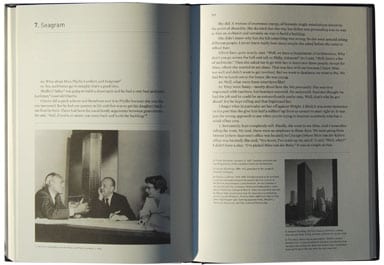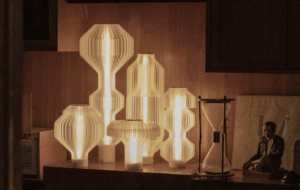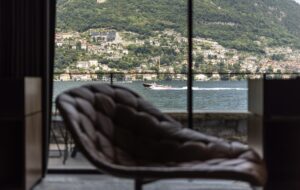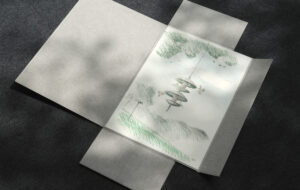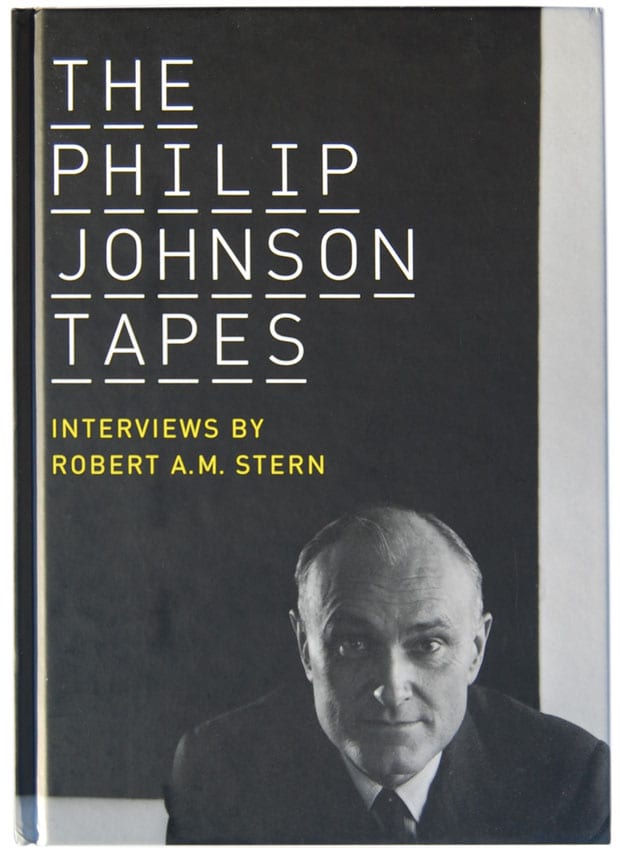
words Owen Hatherley
A fascist activist who stripped modernism of its social value, Philip Johnson has a lot of explaining to do. Do these final interviews shed any light on a slippery enigma? Owen Hatherley found out.
“I can’t stand truth,” says Philip Johnson. “It gets so boring, you know, like social responsibility.” No doubt Robert Stern, who recently won the contest to design the George W Bush Presidential Library, would agree. The Philip Johnson Tapes compiles Stern’s interviews with Johnson in the mid-1980s, and features many blasts at the concepts of truth and responsibility, in a manner which may have seemed witty and recherché for a few months in the 1970s, but has long become tediously conformist.
The interviews make clear that whether modernist or postmodernist, Nazi or “apolitical”, Johnson’s allegiances were similar throughout his career. What connects the oh-so-zany designer of the AT&T tower to the cold minimalist of the Glass House is disdain for the notion of architecture as a functional, social entity. His Nazi activism in the 1930s and his 1980s neoconservatism are connected by a blithe elitism. What is rather astonishing in this book is the story, related by Johnson with some surprise at his own chutzpah, of how he managed to change architectural history at least twice without the prerequisite of talent as a designer or thinker.
This upper-class enthusiast in his early 20s with no architectural qualifications suddenly became a kingmaker with The International Style exhibition at MoMA in 1932. The show and its catalogue transformed the Neues Bauen from a socialist movement opposed to the very notion of the autonomous architect into “an architecture still”. This “style” was modernism purged of functionalist politics, constructivist daring and art deco glitter, leaving a monochrome tomb – one that, as the images in this book remind us, was initially intensely seductive. Then, after his hugely successful collaborations with and imitations of Mies van der Rohe, this “style” became so boring that even Johnson tired of it, moving onto the mock-monumentalism of the Lincoln Center and the skyscraping jokes of his later career.
These events are related with a combination of aw-gee self-deprecation and lordly arrogance that one could, if feeling generous, call charm. The travels to Berlin for boys and buildings provide an undeniably fascinating, if familiar, historical snapshot, and Miesian anecdotes amusingly puncture a mystique Johnson himself largely created. We learn that Mies was “too big and heavy” to have a satisfactory sex life with Edith Farnsworth, and that he once stormed out of the Glass House because “he felt that my bad copy of his work was extremely unpleasant”. Johnson is not quite so candid about himself, for all the flip admissions of his own charlatanry.
Johnson was not so much a Nazi “sympathiser” as a committed fascist activist. He describes here with some contrition an involvement with the populist Louisiana governor Huey Long, but mentions in an aside his support for the Goebbels-quoting Father Charles Coughlin, for whom he designed a speaker’s podium. Although Stern interrogates Johnson more than was customary in his lifetime, this posthumous volume shows Johnson dissimulating impressively, presenting his spectacularly unpleasant politics as some sort of expression of idealism and social responsibility, the failure of which is implied to have caused his subsequent disavowal of the world outside architectural form.
Yet we learn more here about art-historical power politics than we do about architecture. In an afterword, Kazys Varnelis – whose picture research and annotation are brilliant throughout – hits on what makes this book a worthwhile document. That is: irrespective of his architectural talents, Johnson “never questioned his prowess as a networker”. A 1970s photo in the book shows him presiding over a line-up of architects from practically every stylistic wing of the past few decades: Stern, Gehry, Eisenman, Cesar Pelli. This book, like Johnson’s career, is a testament to what mouth and money can bring. His legacy is as huge as it is pernicious.
The Philip Johnson Tapes: Interviews with Robert AM Stern, edited by Kazys Varnelis, Monacelli Press, $40
www.monacellipress.com
